|
Notes from the premiere performance of Sounds of belonging on October 26, 2018:
Our relationship with place can be complex. Elements of sound, smell, sight, and atmosphere interweave with memory to inform our experience of a place. Repeated engagements with a place also shape (and reshape) our perceptions. The influence that place has on our identity and emotions “is part of the systems of meaning through which we make sense of the world.” (Gillian Rose, 1995) I have lived in and traveled to Japan on a few occasions and returned in May for a concert tour, and to conduct research and gather field recordings for this project. For many years now I have been making field recordings. Fundamental to this practice is listening intently to the sounds (and silences) around you — the hums, buzzes, whirls and clanks (natural and human-made) that continuously fill our ears. Through this sort of sonic consciousness (which carries over into my daily and music-making life), I feel a deeper sense of connectedness, not just to place, but to being in this world. As with most locations, many of the urban and rural sounds in Japan are uniquely characteristic of the culture, environment, and people. On this recent visit, tuning in to these sounds, so familiar to my ears, triggered memories and emotions from a deeply rooted past, while also lending familiarity and reassurance to the present moment. While Sounds of belonging is in some ways inspired by the people, places (and sounds) that I encountered on that trip, it is by no means a musical portrait of a particular place or landscape. Instead, field recordings (on their own terms) are combined with live, amplified, improvised and scored sounds to create an abstract atmosphere to evoke a sense of place rather than reconstruct it. The intimacy, sometimes frailty, and perhaps familiarity of the sounds invites a listening (and performing) experience in which participants may find their own connections to place come to the surface. View Sounds of belonging score I acknowledge the support of the Canada Council for the Arts, which last year invested $153 million to bring the arts to Canadians throughout the country.
I walked a lot once the tour wrapped up. Around 85 kilometers. I spent 6 days in Wakayama on the Kumano Kodo pilgrimage route. It was quiet, solitary, very green, and the perfect way to reflect on my time creating, playing and recording music with all these wonderful folks in Japan.
Kumano Kodo (熊野古道) refers to a network of trails located in the Kii Mountain Range, in southern Kansai. The route has UNESCO World Heritage designation (the only pilgrimage route besides the Camino de Santiago to bear this title) and has been in use for over 1000 years by people from all levels of society. The route was not only developed as a way for people to travel to the three sacred Kumano shrines—Hongu Taisha, Hayatama Taisha and Nachi Taisha—but also as a religious experience, passing through often difficult and dangerous terrain. While there are no longer so many dangers along the route, there were some steep climbs and long days on foot. I didn’t run into too many other folks on the trails, so there were sometimes long stretches in my day where I really felt like the only one on the route. As a solo female traveler in the “wilderness,” this would normally cause me some anxiety, but I really did feel quite comfortable the entire way. I could count on passing a trail signpost every 500 meters, so it was nearly impossible to get too far off track. When I did encounter other hikers, they were all incredibly friendly and made good companions for short stretches of the walk. I always feel safe no matter where I am in Japan, and that’s a pretty special thing. Much of the hike was through forested areas—mostly second growth but there are also some outstanding ancient sugi (cedar) and camphor trees along the way. The lush scenery and mountain vistas were incomparable. There were short stretches of the hike along narrow, often winding roads, as the route occasionally passed through the quaintest of towns. Many Shinto shrines line the route, from small stone monuments to larger shrines with torii (gates) and honden (a small building to enshrine the kami, and in this region, the mountains are revered). Of the three sacred grand shrines, it was Kumano Nachi Taisha that I was most excited to reach on the final day of my journey. The shrine honours Nachi-no-Otaki, a 133 meter high waterfall—the tallest in Japan. The waterfall and surrounding forest have been protected since ancient times and the sight of the shrine’s three-storied pagoda with the waterfall in the backdrop is particularly magical. The approach to the mountaintop shrine is a path called Daimon-zaka. This was my favourite stretch of the entire Kumano Kodo route. The impressive cobblestone staircase (600 meters long with 267 stairs) is lined with enormous, ancient trees and runs from the valley bottom to the Kumano Nachi Taisha shrine sanctuary. I made my way up these steps slowly, not just because I had shin splints by this point in the hike, but to admire each awe-inspiring tree. I stayed in a variety of accommodations along the route and they made for the most pleasant resting spots for this journey (there aren’t too many options, so unless you are planning to camp, it’s important to booking early). From minshuku (family run Japanese style “B&Bs”) with exceptional meals, to a hostel with a hot spring bath, and an entire house to myself on a quiet mountain side, all of my stays were ultra-comfortable and the hosts were always so gracious. I can’t think of a better way to have wrapped up my month in Japan (except by making more music). I was so glad to have those long walks, the fresh air, that closeness with nature and history, and the luxury of time to complete the pilgrimage.
Jerry Gordon just celebrated 24 years of living in Osaka where he has been active as a poet, performer and concert presenter. I met Jerry early on while living in Kobe at the monthly Big Apple improvisation workshops. We collaborated on a number of performances during my time in Japan and on subsequent visits and it's always great fun making music with him. He currently runs an experimental music/performance series, Miniatures, out of his house—a renovated meat packing facility near Chidoribashi station—and draws a dedicated and attentive audience. This was concert No. 69 in the series at MIIT House and my last performance of the tour.
It was a honour to play in this intimate space where many of my friends and performers who I admire have played and danced. With Jerry on percussion/objects and saxophone, and Mitsuaki Matsumoto—who was at the start of a tour across Japan—on his modified/prepared biwa (a Japanese lute-like instrument), we played two sets together. There is no piano at MIIT House so I made use of the various objects/percussion, contact mics, harmonica and melodica that I brought along on this trip. Without any warm-up together and being introduced to Mitsutaki and his music for the first time, I thought we played a beautiful, cohesive couple of sets. And we had such great collective intuition when it came to endings. I just love it when that happens! Between our sets, sound artist Jet Vel accompanied chef/performance artist Junko Gohan while she prepared a mysterious dish behind her shopping bag of ingredients. Jet manipulated sounds sampled from Junko’s cooking preparations to create a delicious soundscape. At the break, we all got to taste Junko’s delightful salad with mango dressing. It was so fitting for everyone to be snacking on salad, seeing as the audience gallery is essentially Jerry's kitchen. Special thanks to Jerry for organizing such a great evening and to all those who came to listen, eat, drink, and chat. Shin'ichi Isohata offers more thoughts and photos of the evening on his blog.
My next stop on the Japan tour was Saitama (just outside of Tokyo), taking the train from Okayama to meet percussionist and most gracious host Naoto Yamagishi in his countryside town of Hidaka. Naoto is a fixture in the improv/music scene in Tokyo and just returned from a tour in Europe (he lived in France for a few years and is well-connected there as well). He is part of some very intriguing projects, like this one, so I was eager to learn more about his collaborations, performances, and the experimental music scene in general. Being in the countryside, I also took the opportunity to do some field recordings, capturing the evening symphony of frogs in the rice fields, and waterfalls, streams, and birds during a trip to the mountains.
While we didn’t have a live performance scheduled, Naoto booked us a large space with a nice grand piano where we spent nearly 7 hours improvising together. Noato’s organic sound palette and perceptive playing were a great match for my gentle and deliberate approach at the piano. Later that evening we were joined by the brilliant shamisen player Maya Yamao and saxophonist Makoto Kawashima. Although I was beginning to tire by that point in the evening, I greatly enjoyed our session together. I look forward to future collaborations with Naoto and Maya (you're both coming to Canada, right?!). Thank-you for the wonderful memories, homemade onigiri, and sake!
Today we hosted a workshop and performance in such a special, idyllic location—an Edo period house called Tsukubo Katayama in the countryside town of Chayamachi, in Kurashiki, Okayama. Within the walls of this historical compound, peaceful mossy gardens surround the various spaces that are currently used for tea ceremonies, performances and other community events. I'm so thankful to Nozomi Miki for scouting out this location for us and for her generous hospitality over the few days while I was in town.
I've known Nozomi since my days living in Kobe, where we became fast-friends and musical collaborators. She moved to Kurashiki a few years ago, where she followed her dream to open a cafe and continues her work buying and selling antique Japanese swords (a trade she learnt and took over from her late-father). We spent the previous day cycling around Naoshima, an island in the Seto Inland Sea famous for its art galleries and sculptures. Tadao Ando's meticulously designed Chichu ("underground") Art Museum is a must-see and certainly worth a special visit. Back to the workshop and concert: we had the privilege of performing on a gorgeous noh stage, with all of the room's sliding doors open to the outside gardens. The noh stage is an extremely simple space with a pine tree (the oi-matsu) painted on the back wall. This is said to be the eternal backdrop of noh. We all remarked afterwards on how inspired we were by the pleasant ambiance, scenery, and natural soundscape.
Of the workshop participants, only one was a trained musician and none had tried improvisation before. As a way to bring the focus of our attention to listening and tune our ears to the environment, I started the afternoon with Pauline Oliveros’s Rock Piece. We played outdoors in the enclosed garden among the sounds of birds, insects, frogs and the occasional passing car. It was really beautiful. After moving into the noh performance space, we took some time getting acquainted with one another through an intimate vocal improvisation, taking turns passing sounds around the circle in which we were seated. Next, with instruments in hand—mostly selected from the assortment of objects that Nozomi and I gathered—we continued with a similar exercise, taking turns playing our sounds around the circle, which gradually developed into a free improvisation. I was really impressed with how comfortably and quickly the group tuned in to one another and the environment, approaching the free improvisation with care and intention. It was a lovely time.
Lonesome Hope (a.k.a Nozomi) opened our concert with some of her original songs. It was such a delight to hear her perform again, as it had been a few years since she's been on stage. She was accompanied by drummer Yugi Haraguchi, and occasionally Shin’ichi Isohata on guitar and myself on melodica. Pianist Naoyo Yakushi, Shin’ichi, and Yuji followed with some of Shin’ichi’s original works—part scored, part improv—then I gave a solo piano performance of The continuum of something–nothing (on an electric Korg micro piano). We also presented a delicate performance of Thusness, loveness, I piece for open instrumentation that I recently composed for the A Place to Listen: Gentle Traces Festival, and it felt so appropriate for this venue. Yuji, Shin’ichi and I brought the afternoon to a close with a short improvisation. We invited the audience to join us and many did. It was a beautiful thing. The whole day was so wonderful. Everyone, including the participants, played with such sensitive awareness and the atmosphere was one of pure enjoyment and calm. Read more about this event on Shin'ichi Isohata's blog
Tonight’s performance at Big Apple in Kobe felt like a homecoming.
It was while living in Kobe in 2006-08 that I began improvising. I was encouraged by a group of musicians who gathered at Big Apple for a monthly experimental improv night. It was serendipitous. I showed up to listen, but the musicians and bar owner, Kondo-san, urged me to get up and play. I sat at the piano and did two things I’d never done before: 1) improvise solo on the piano and 2) do it in front of an audience. There was something about being anonymous in the room that gave me the nerve to set my performance anxiety aside and just play. I did it the next month, and the months that followed. Soon I began to meet and collaborate regularly with a few of the players including guitarist Shin’ichi Isohata, singer/songwriter Nozomi Miki (a.k.a. Lonesome Hope), and saxophone player Jerry Gordon. It is these musicians who have inspired me (and made it possible) to return to Japan for this tour. Big Apple hasn’t changed in 10 years. Kondo-san is still behind the bar and the live house continues to host experimental and jazz concerts, recording sessions (I made my first recording with Shin’ichi there), and improvisation workshops. We had an intimate audience for this concert with Shin’ichi, pianist Naoyo Yakushi, and guitarist Takumi Seino. Naoyo and Shin’ichi performed some of Shin’ichi’s original music, and Takumi and I each performed solos (Takumi's guitar solo was absolutely captivating). We also played a few of my compositions including Duo 1, a new piece titled Indigo for piano and guitar, memory or ghost, and two movements from of things remembered or left behind. Takumi, Shin’ichi and I also improvised a short set before Naoyo ended the evening with a performance of my solo piano piece Floating Point. It was a very special night and so great to perform with Shin'ichi once again. I can't thank him enough for being such a strong supporter of my music and for helping to organize this tour from afar. More about this concert can be found on Shin'ichi Isohata's blog About the musicians: Shin'ichi Isohata was born in 1962 in Osaka and began to play the guitar at the age of 12 years old, He soon became interested in the harmony and ad-lib of jazz music and pursued self-studies. He later studied modern jazz theory and fretless guitar technique under Tim Donahue (1982-85) and Masayuki Takayanagi (1985-91). He corrected the foundation of guitar technique in Takayanagi's private school and also learned his aesthetics and philosophy of music. Isohata was one of Takayanagi's last few students. Isohata has lived in Hyogo since 1994. His musical activities are varied and he collaborates regularly with many wonderful musicians in Japan and abroad. His guitar music consists of images that are created from perceptions and his original theoretical structures. His music has a delicate and calm sound, clear tone, and is inspired by Japan beauty. His lifework, series "EXISTENCE" was started in 1996 and aims to share an esthetic space with artists of other fields. In 2014, he composed the soundtrack for the documentary film “Legacy of Frida Kahlo - Miyako Ishiuchi, as weaving" directed by Tadasuke Kotani. Guitarist and composer Takumi Seino has performed and recorded with diverse acts including his own works on VOS records (Japan), Priority - Musea records (France), Next Order - LoLo Records (USA), Six North - Musea records (France), Ryo Hashizume Group - Hao records (USA), PRAED and TAKUMI SEINO - GPS Records (Japan). As an improvising musician, he has been working with many talented artists all over the world and also performs solo. His unique, colourful expression has been described as "pictorial." He has appeared on over 50 CD releases on the labels in the U.S.A., Europe and Japan. Takumi graduated from the Berklee College of Music in 1996. He was selected as a guitarist for the Berklee College of Music All Star Band and performed at the 23rd Annual IAJE International Conference in January 1996 in Atlanta, Georgia. At that time, he was awarded by IAJE a Special Citation for Outstanding Musicianship. He was also named best guitarist at the YAMAHA competition in Osaka, Japan 1985. Pianist Naoyo Yakushi graduated from the Osaka Music University (piano department) and studied chamber and solo performance at the Mozarteum Academy of Music summer course in Salzburg. She has also studied art therapy and music therapy and has become a professional therapist, while also performing regularly in concert and coaching piano. Ms. Yakushi studied the basics of jazz piano from Yoko Aoyagi. Currently, she continues to explore the representation of the human as well as musical expression through improvisation. Today I had a recording session with guitarist Shin’ichi Isohata and pianist Naoyo Yakushi in a studio at the Osaka Municipal Art Innovation Centre. We met for one rehearsal session a couple days prior—in a tiny studio with an electric piano—and approached the day with some spontaneity (ie. we didn't have much of a plan and just recorded what we could in the time we had).
We ended up recording several of my works including a new duo, Indigo, that I composed especially for Shin’ichi and I for this tour, as well as Duo 1 (guitar and piano), memory or ghost (trio), Floating Point (Naoyo on piano), the third movement from of things remembered or left behind, and one of Shin’ichi’s compositions. I’m looking forward to hearing it all once Shin’ichi completes the editing. It was such a pleasure to spend time playing music with Naoyo and Shin'ichi for the day. They are both such generous musicians who approach their playing with thought and care. We make a good team! More here from Shin'Ichi Isohata's blog Tonight was the first performance of my Japan tour and I must admit that I was feeling a little timid having no idea what to expect until I arrived at the venue. The show was at Galerie Tzigane, a small and charming bar/live house not far from Osaka Castle. The bar has been run for the past 13 years by the equally charming Miyao Chiaki, who pulled up shortly after I arrived in a white Volkswagon Beetle and who I later learnt is a guitarist himself as well as an accessory/jewellery designer. The line-up of musicians was impressive and it was a privilege to share the evening with Yasuyoshi Ogino (guitar), Christopher Fryman (trumpet), Yuri Nakasone (voice, electronics), Takashi Miyamoto (electric bass), and Yuji Haraguchi (drums). With the exception of Christopher, it was my first time to meet and perform with these musicians. We played a series of improv sets, rotating in trios, with myself as the common denominator on piano. I was also urged to play solo so I performed two of my compositions: Floating Point and the continuum of something–nothing. I was taken by the hush in the room as my fingers made their way through these quiet pieces. To end the evening, all 6 of us packed tightly onto the "stage" for a final set. As much as I enjoyed playing with each of these musicians, I wish that I could have been in the audience to just listen to and admire each of their playing. Thank-you to Takashi Miyamoto for organizing this evening of adventurous music. It was a challenging, exciting, and fun start of my tour. About the musicians: Christopher Fryman was born in Manchester, England in 1941 during the Second World War and grew up in Canada. He lived in Sydney, Australia, and Papua New Guinea before moving to Japan in 1974. Christopher has worked as a documentary TV cameraman a composer of dance and film music, as well as a ballet character performer. His roles have included Carabosse in Sleeping Beauty, Dr. Coppelius in Coppelia, Wicked Stepmother in Cinderella, Drossellmayer in Nutcracker and Don Quixote in Don Quixote. He plays trumpet in many music ensembles including Bliki Circus (Gypsy Punk), Floating Room Duo (electronics/trumpet and guitar), Jazz Junction (big band), Greenhorn Jazz Orchestra (big band), Tone Friendlies (dance and Enka band) and performs trumpet for various Butoh dancers. Yūji Haraguchi is a drummer based in Osaka. He is active as an improviser and session musician with artists of various genres. Bassist and producer Takahashi Miyamoto has performed and recorded with countless artists in Japan and abroad. He is president of the music production label “Chord Production.” In 2017 he released his first solo album, “Polarization.” Vocalist Yuri Nakasone studied popular vocal music at the Osaka College of Music Junior College Department. As a singer-songwriter, the YURISONE BAND performs regularly in and around Osaka and released the album released. "Starry sky in the water" in February 2018. As the improvisation duo "Tonal" Yuri uses extended vocal techniques and vocal effects in her performances. She also performs vocals in jazz and big band, CM logo and in chorus groups. Guitarist, composer and improviser Yasuyoshi Ogino was born in Osaka and grew up in Nara Prefecture. His music is influenced by European jazz, South American music, heavy metal, classical, avant garde and pop music. He participated in the Jazz laboratory 'deafinado' at Osaka University of Foreign Studies. He obtained a Berklee College of Music Scholarship and studied abroad in 2002. From 2005, his involvement with the comedy/jazz punk trio, Wisdom Wisdom Collective, launched Ogino’s professional music career and he began to get involved in free improvisation, stage theater music, neo-folk and numerous other projects. In 2006 he started “sound, people, traveling” (oto na tabi) and made their nationwide debut tour in 2010 with their first album "Tinga Tinga Japonism." They released their 2nd album "Glocal Happiness Departure" in 2016. Ogino has studied guitar with Makoto Nakagawa, Hiroyuki Okamoto, Hirofumi Okamoto, Mike Stern, Hiroya Tsukamoto, Akira Shiromoto, and Gustavo Eiriz . In addition to performing, he has credits as a composer and arranger and has his own label "Oggi Records." 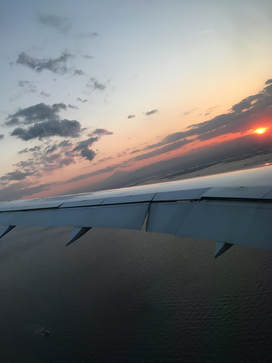
I couldn’t have arrived in Japan to a more iconic view: a warm sunset over Tokyo with the silhouette of Mt. Fuji in the distance. From above, the dense city looks like it could expand indefinitely into the Pacific Ocean. But to the west, cascading hills lush with sugi (Japanese Cedar), maple and bamboo, are a reminder that there is so much more to these islands than the crowded cities.
My last visit to Japan was in November 2012. Before that, I spent two and a half years living in Kobe and since moving back to Victoria in 2008 I’ve returned to Japan on a few occasions. I was having some jitters about leaving Victoria to spend the entire month of May here. I imagined after being away for several years, and with the many circumstances that have changed in my life since, that the place would feel different. Following many hours of travel, a warm greeting from my hosts, and a decent night’s sleep, I spent my first day strolling through Kawachi-Kosaka—a familiar Osaka neighbourhood where I am currently staying. The sounds (of a train passing, the crosswalk beeping, the rattle of shutters opening, sirens in the distance, a myriad of announcements amplified from shops and stations) and smells (of a curry shop, fresh pastries out of the oven, of a diesel car passing, and spring azaleas) are so intensely connected with this place—almost more than any other place that I’ve been—and my memories of them are more deeply ingrained than I expected. I immediately felt at home again. I'm here for a change of scenery, to visit old friends, to make new ones, to travel, explore, hike and eat amazing food. But mostly, I'm here to make music. Back in March 2017 I contacted my old friend and collaborator, Shin'ichi Isohata, with the proposition of a tour in Japan together. I was thrilled that he was thrilled and the planning began. I am so excited to be here. Japan has always been a special place for music-making for me and this is my first tour. It won't end here. This is just the first part of a larger project (call it the research and development component) for a new work that I will present at A Place to Listen in Victoria in October 2018. My mission is to gather field recordings, make sketches, and push the boundaries of my own musical practice, where composition, performance and improvisation intersect/collide, and to make music with some incredible people and players. I am grateful to the Canada Council for the Arts as well as the SOCAN Foundation for the generous support for this project. |
Archives
Categories
|

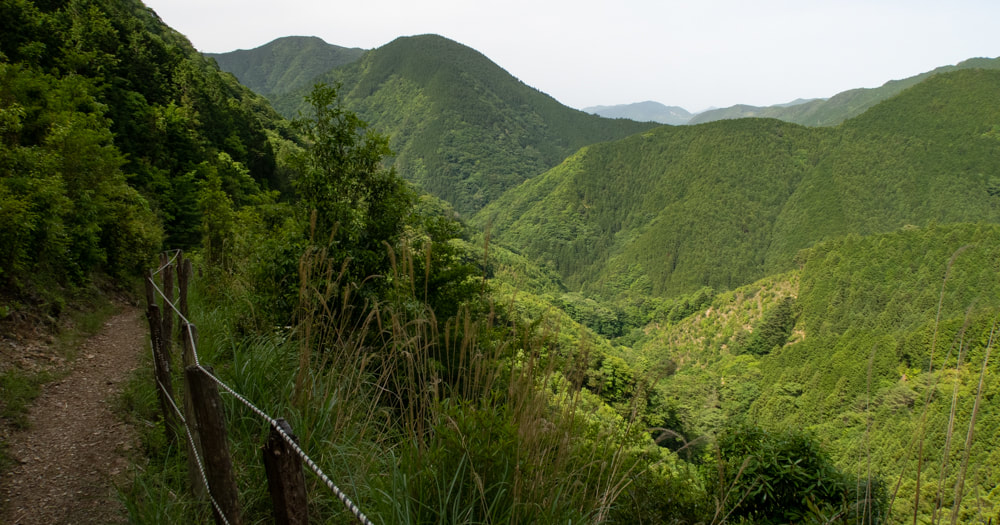
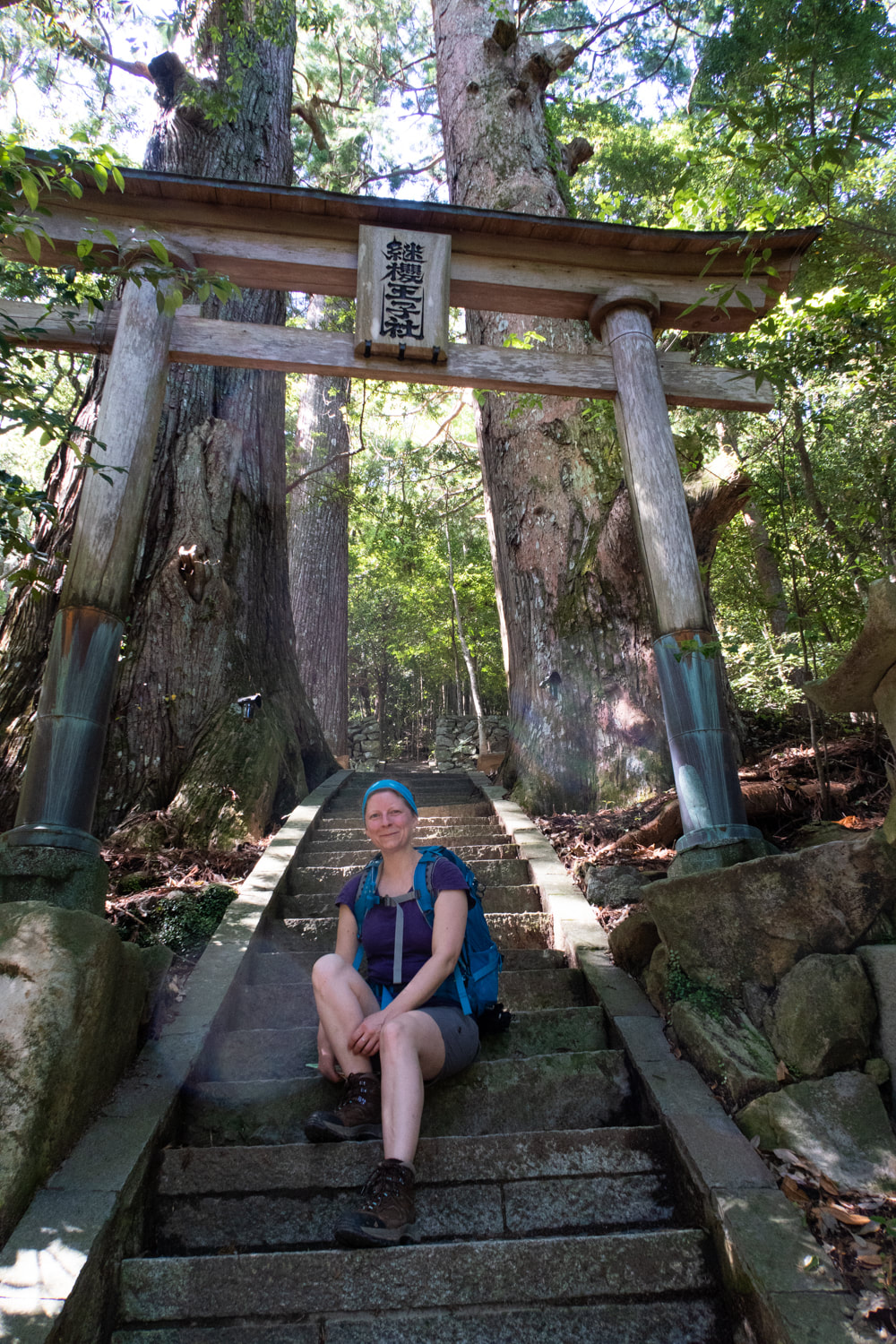
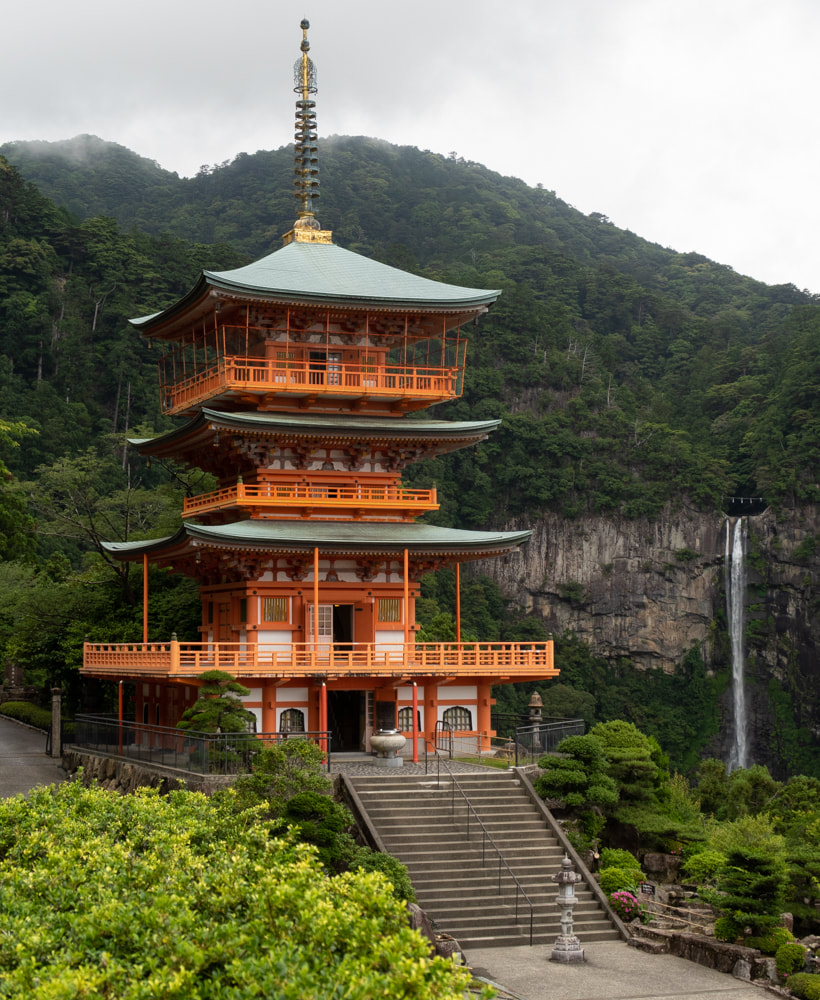
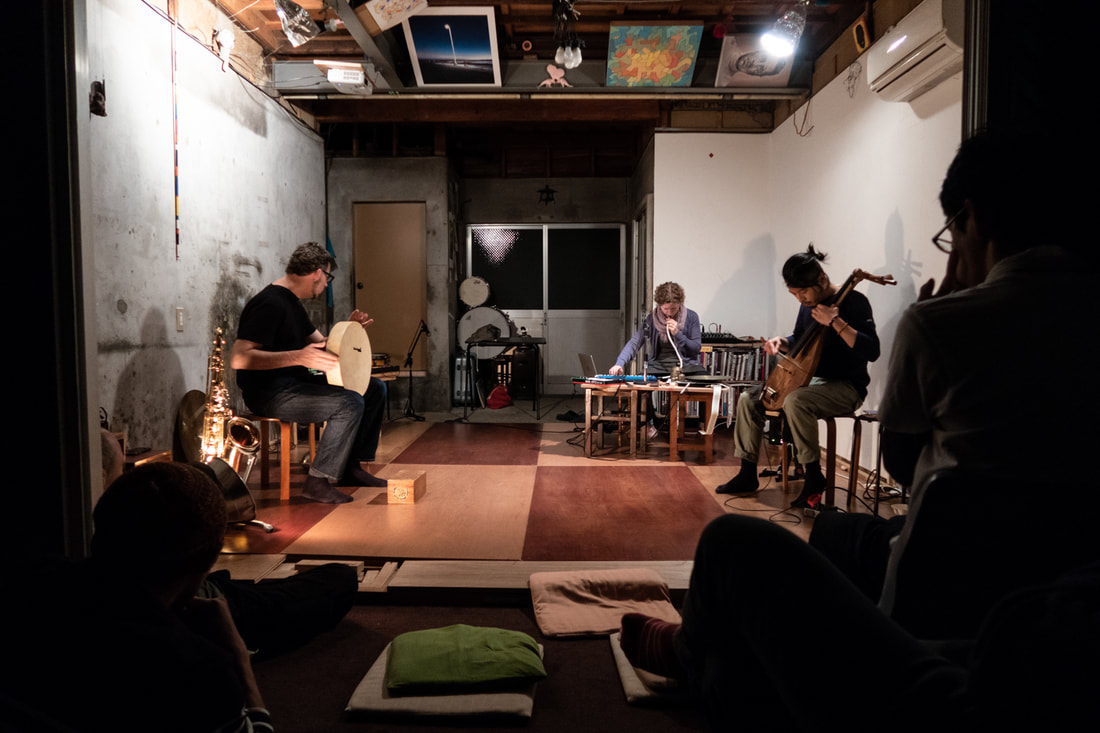
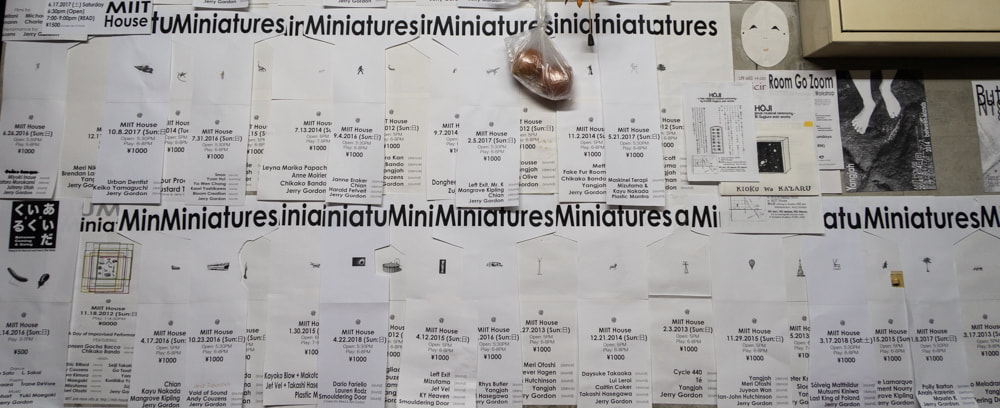
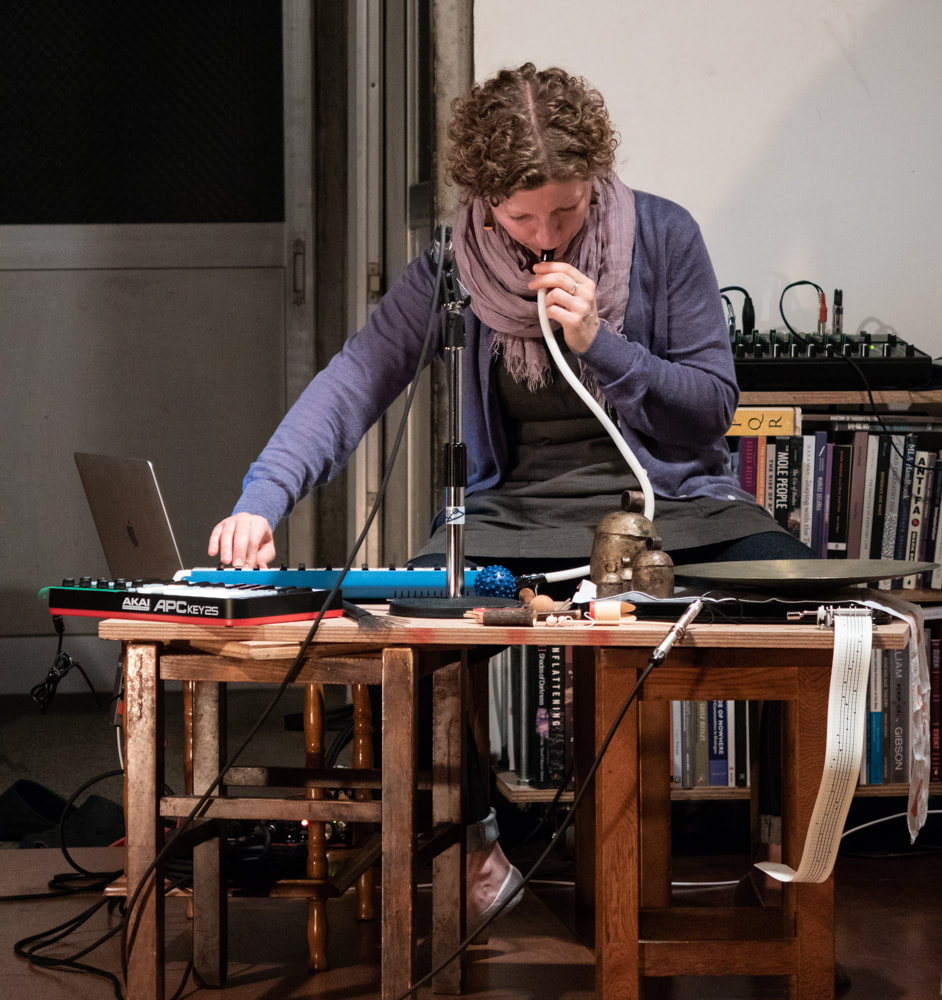
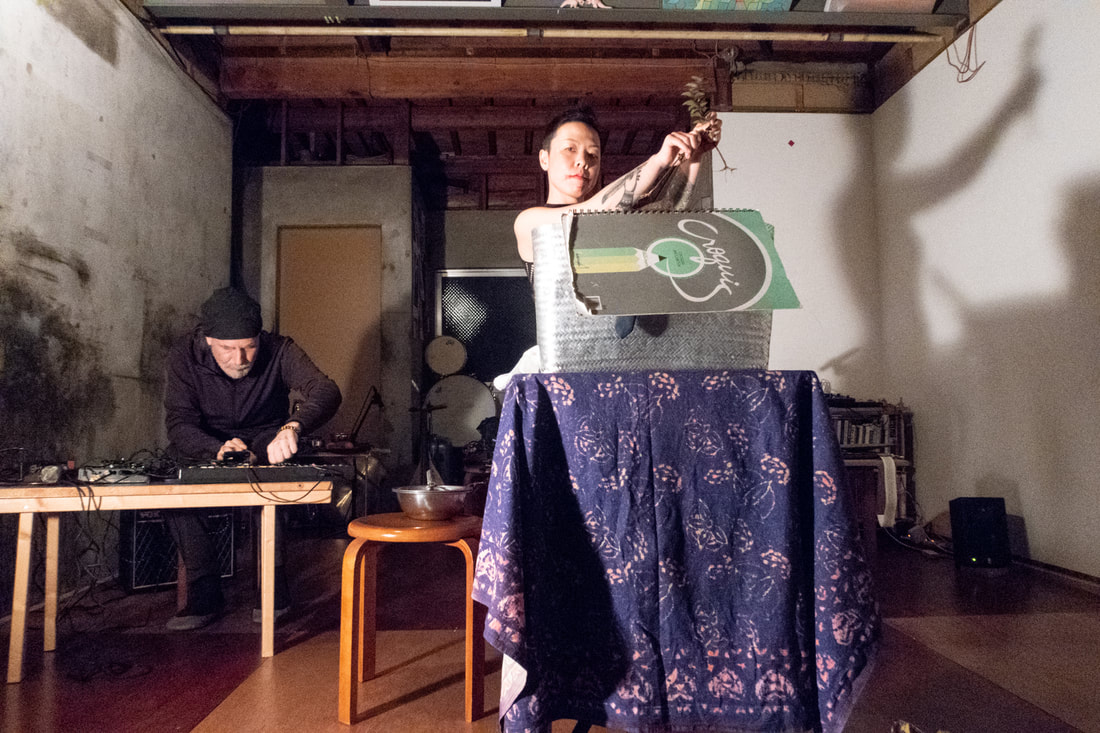
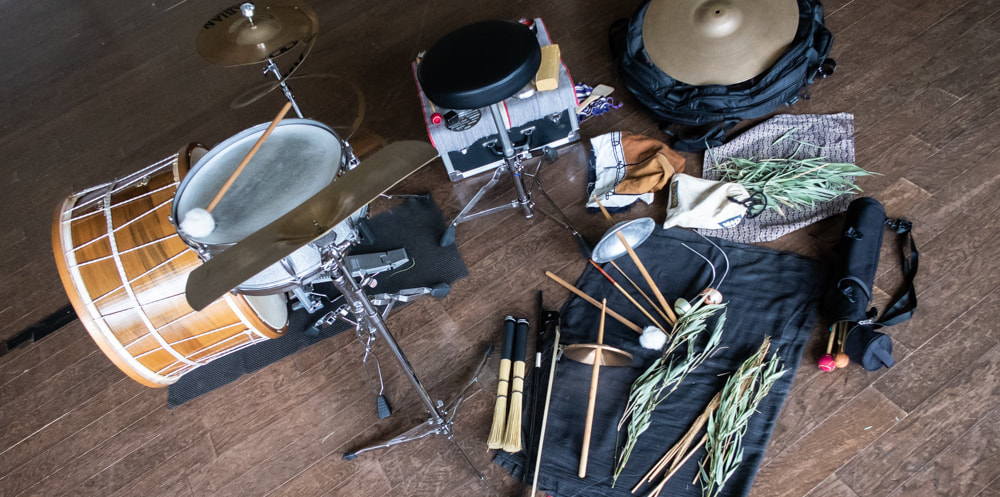
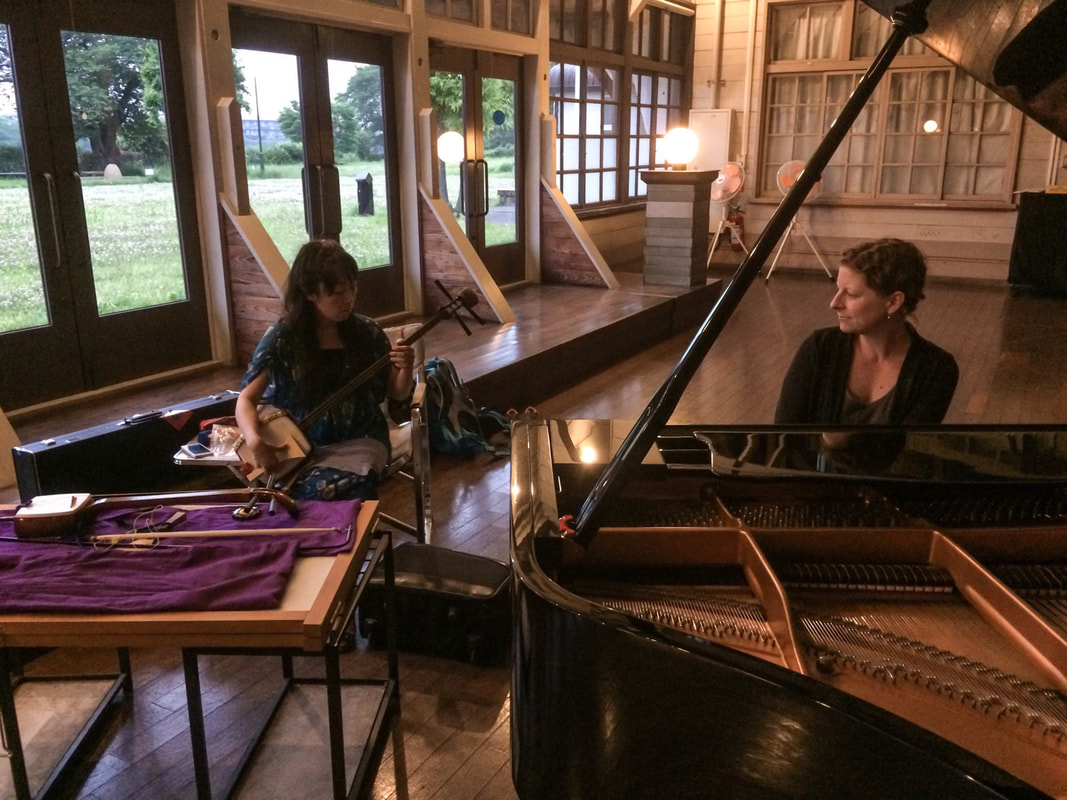
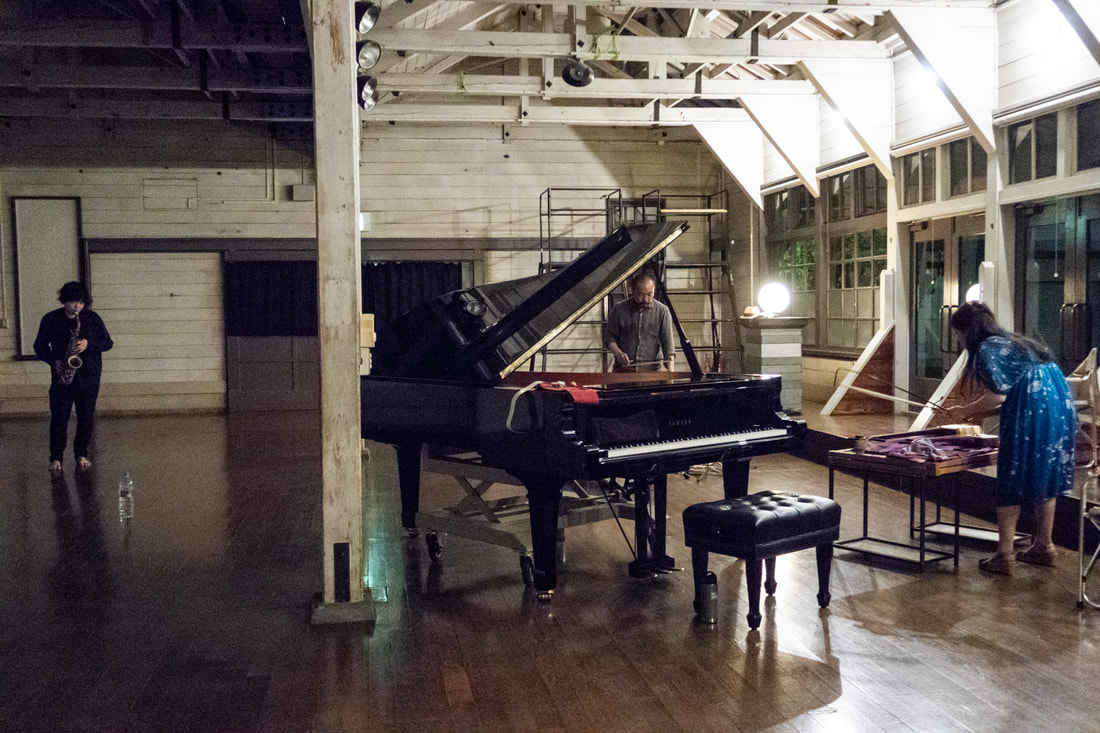

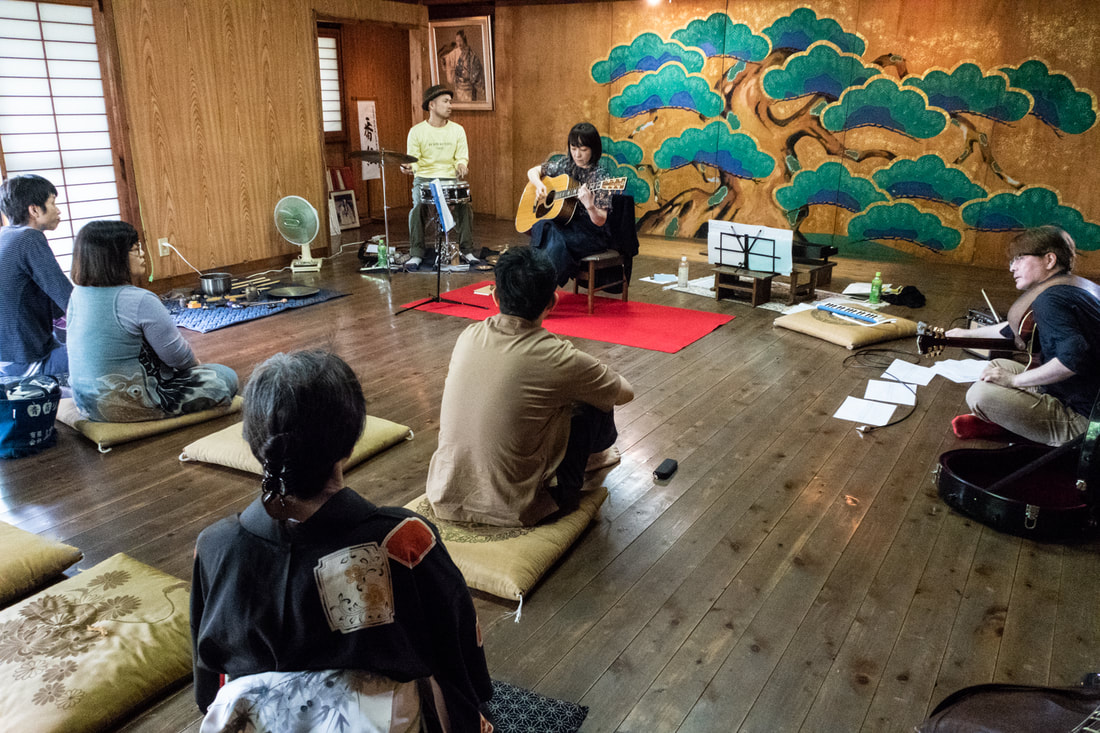
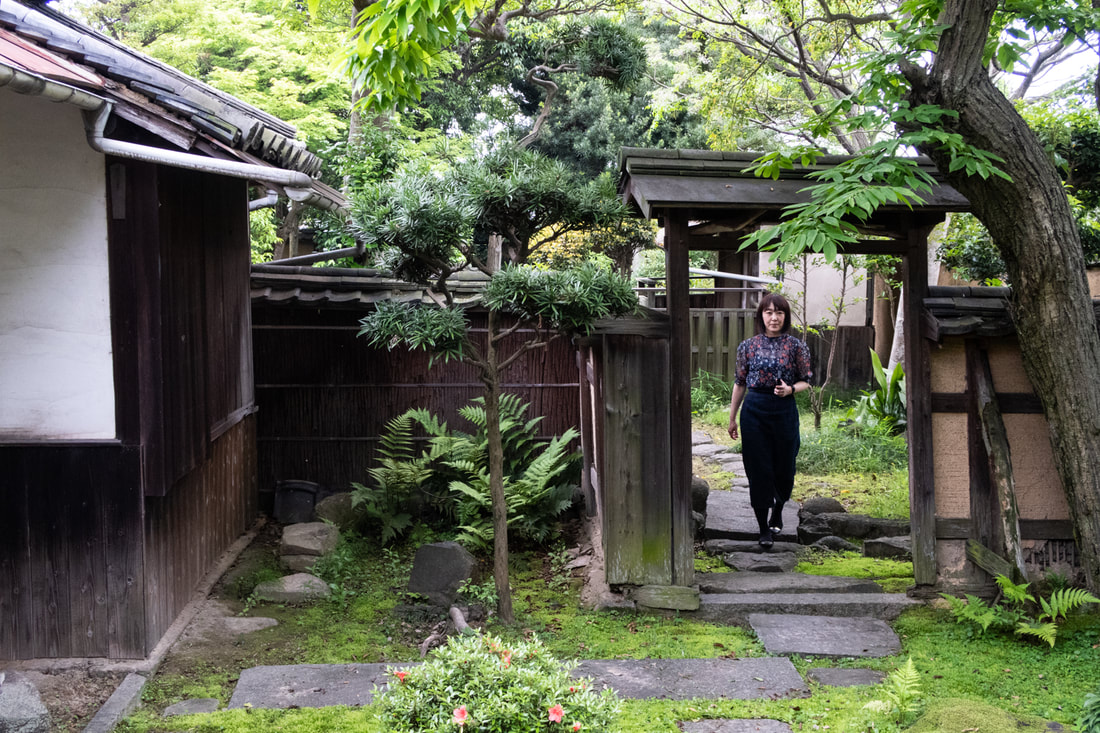
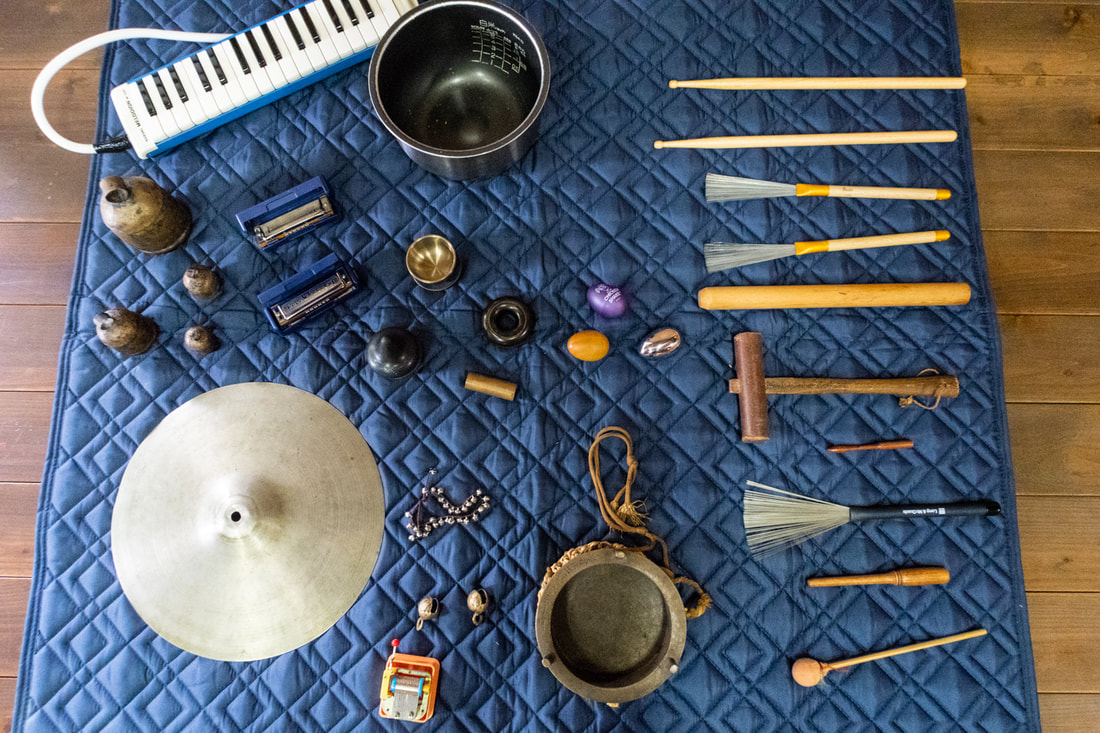
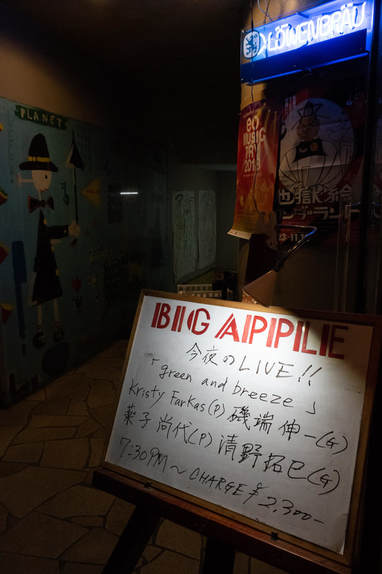
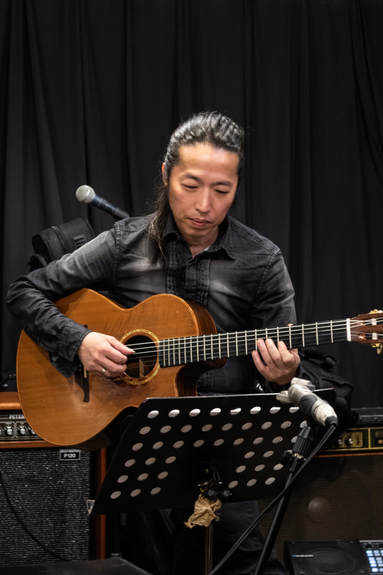
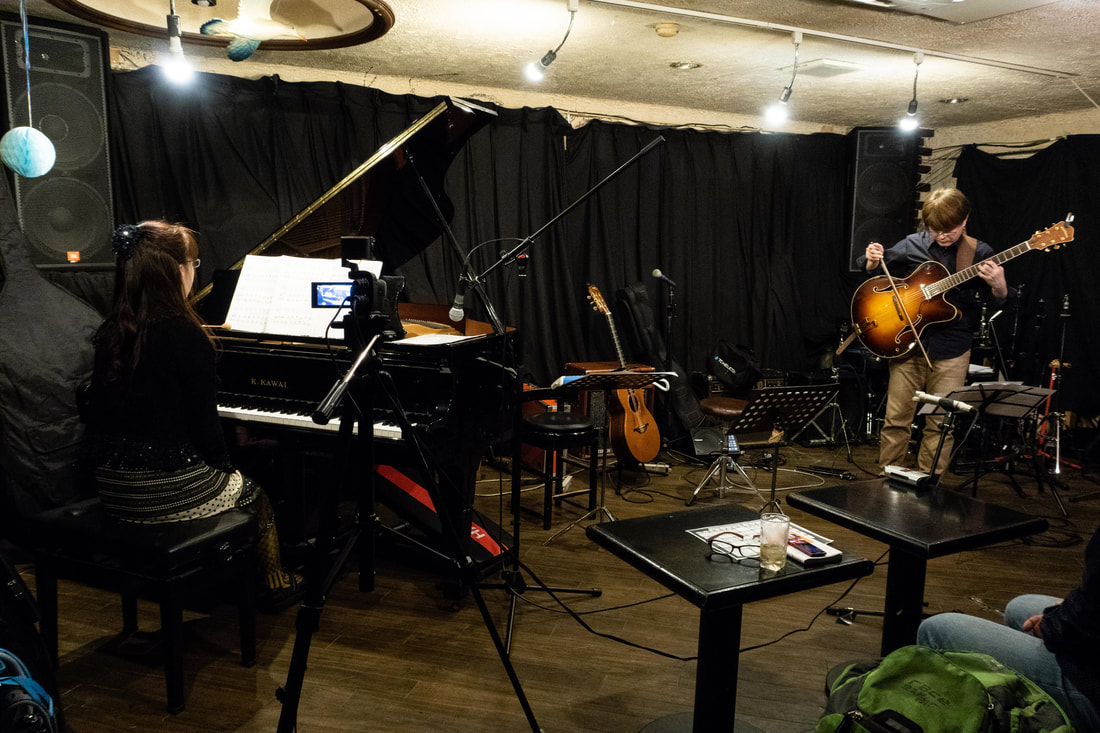
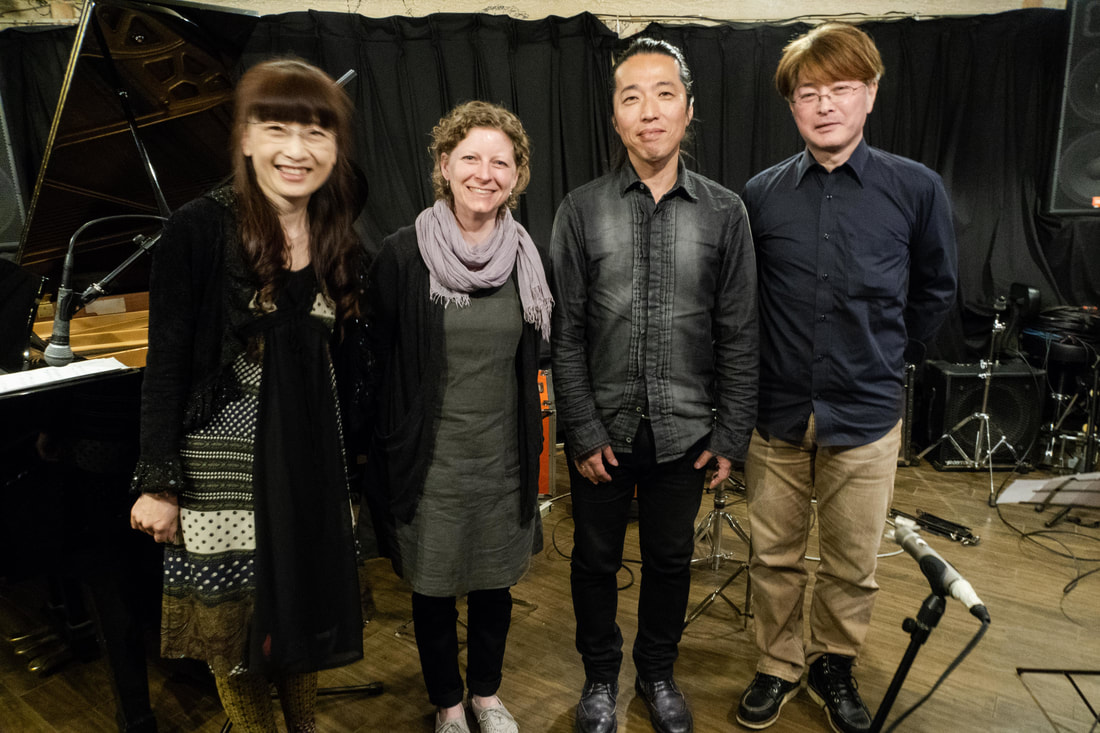
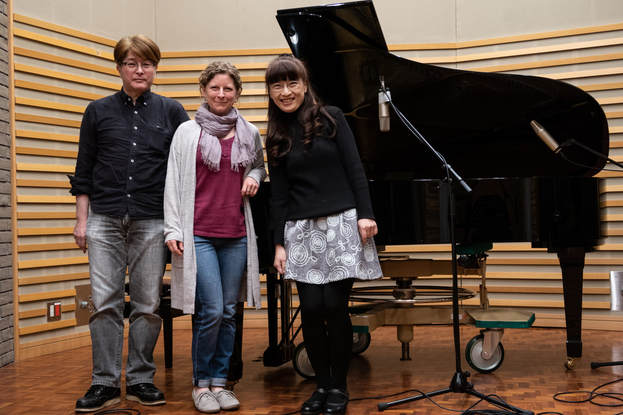
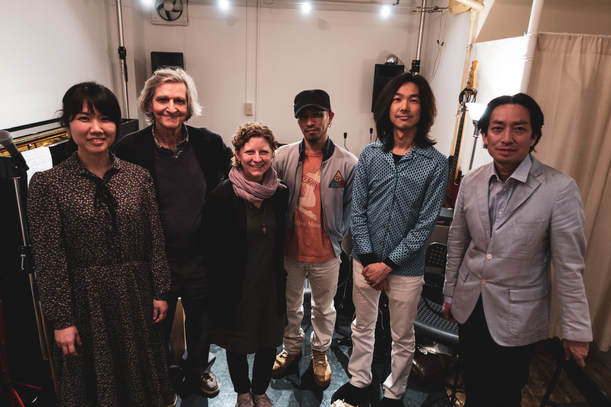
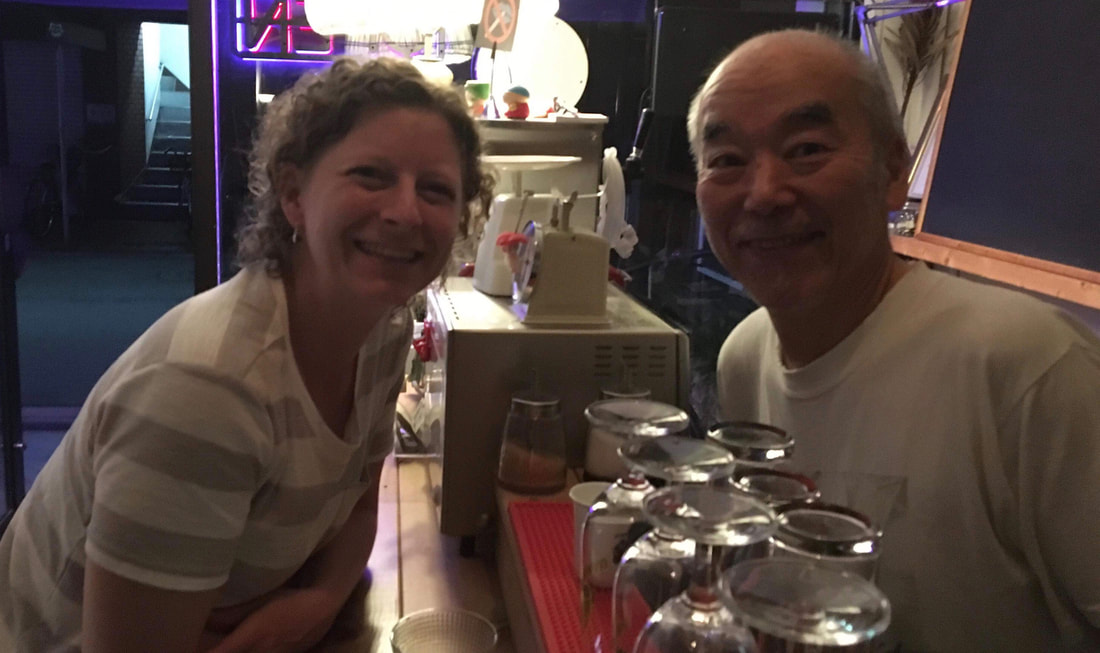
 RSS Feed
RSS Feed